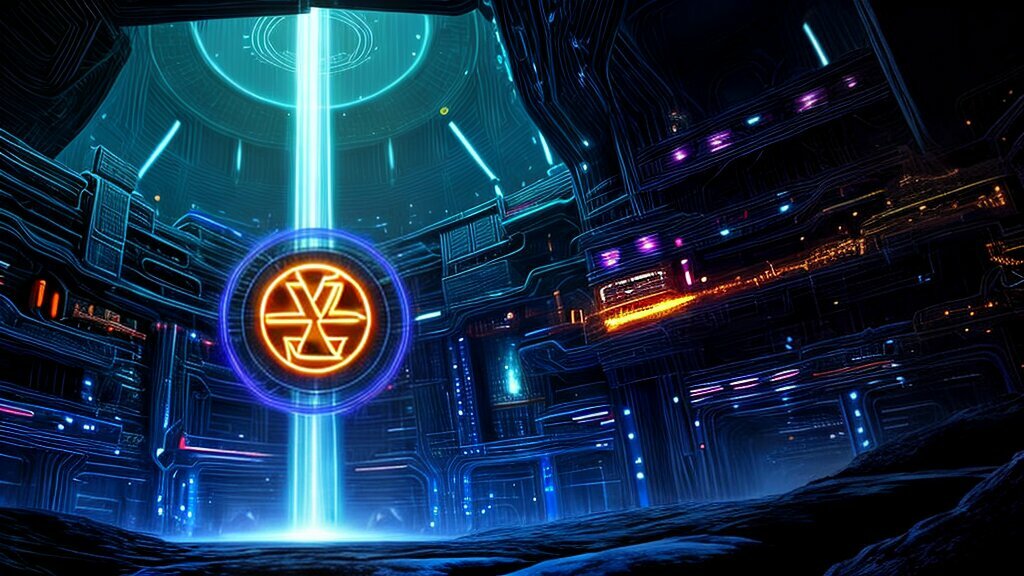The Fifth Element language is a unique and fascinating concept that has captured the attention of pop culture enthusiasts for years. Originating from the iconic French sci-fi film “The Fifth Element,” the language has a distinctive structure that has since been studied and analyzed by linguists and fans alike. In this comprehensive guide, we will explore the origins, structure, influence, linguistic features, evolution, cultural significance, and future of The Fifth Element language, as well as notable examples of its use in popular media.
Key Takeaways:
- The Fifth Element language is a unique and fascinating concept that has captured the attention of pop culture enthusiasts for years.
- The language originated from the iconic French sci-fi film “The Fifth Element.”
- It has a distinctive structure that has since been studied and analyzed by linguists and fans alike.
- The language has had a significant impact on pop culture, including its use in movies, TV shows, and books.
Exploring the Origins of The Fifth Element Language
The Fifth Element language first made its appearance in the 1997 sci-fi blockbuster film, “The Fifth Element.” Created by French director Luc Besson and constructed by linguist Mireille Gross, the language features prominently in the movie as a form of communication used by the extraterrestrial beings who visit Earth to save humanity.
The language is a unique blend of different linguistic inspirations, including ancient Egyptian, indigenous African languages, and various Slavic and Semitic languages. According to Gross, the creation of the Fifth Element language was inspired by the challenge of constructing a language that would be both visually and aurally pleasing to audiences.
Creating a Language for the Big Screen
The development of The Fifth Element language was a collaborative process between Besson and Gross. Besson provided the initial framework for the language, while Gross worked to construct a grammatical system and vocabulary that fit the unique sounds and style of the language. The goal was to create a language that would be both visually and aurally appealing to audiences and would add an otherworldly feel to the film.
Gross drew inspiration from a variety of existing languages, including ancient Egyptian hieroglyphics and indigenous African languages, as well as various Slavic and Semitic languages. She also incorporated elements of onomatopoeia, creating words that sound like the meaning they convey, such as “Zorg” for the villainous character in the film.
The result is a language that is both exotic and familiar, with a melodic and rhythmic quality that sets it apart from other constructed languages in pop culture.
The Structure of The Fifth Element Language
The Fifth Element language is a unique and fascinating construct, with a structure unlike any other language in existence. Its grammar, vocabulary, and syntax are all distinctive and have contributed to its lasting appeal in popular culture.
At its core, The Fifth Element language is a constructed language, also known as a conlang. It was created specifically for the 1997 sci-fi film, The Fifth Element, by French director Luc Besson and linguist Dr. Marc Okrand. Dr. Okrand is also known for his work in creating the Klingon and Vulcan languages for the Star Trek franchise.
One of the defining features of The Fifth Element language is its reliance on a minimal set of sounds, with only seven basic vowels and twelve consonants. This limited inventory of sounds forces the language to rely heavily on intonation and stress patterns to convey meaning.
The grammar of The Fifth Element language is also unique, with a sentence structure that is subject-verb-object, similar to English. However, the language has no articles, prepositions, or conjunctions, which can make it challenging to translate into other languages.
Another interesting aspect of The Fifth Element language is its use of color-coded words. Words are grouped into five categories based on their meaning, with each category assigned a corresponding color. For example, blue words represent concepts related to water and green words represent organic matter.
The syntax of The Fifth Element language is also notable, with a focus on word order rather than inflection to convey tense and mood. This allows for greater flexibility in sentence structure and contributes to the language’s poetic and musical quality.
The Structure of The Fifth Element Language: A Brief Summary
| Component | Description |
|---|---|
| Sounds | Seven basic vowels and twelve consonants |
| Grammar | Subject-verb-object structure with no articles, prepositions, or conjunctions |
| Color-coded words | Words grouped into five categories based on meaning, with each category assigned a color |
| Syntax | Focus on word order to convey tense and mood, resulting in poetic and musical quality |
Understanding the unique structure of The Fifth Element language allows for greater appreciation of its intricacies and its impact on popular culture.
The Influence of The Fifth Element Language in Pop Culture
Since its appearance in the 1997 movie “The Fifth Element,” the language has captivated audiences with its unique structure and sound. Its peculiar grammar and phonetics have made it a favorite with science fiction writers, composers, and linguists.
But it didn’t stop there. Its influence on the pop culture scene is undeniable, with references and adaptations in movies, TV shows, and video games.
“The language from The Fifth Element is an incredible creation,” said composer Hans Zimmer, who was inspired by the language for his score in the 2011 movie “Sherlock Holmes: A Game of Shadows.”
The language has also been used in popular TV shows such as “The Big Bang Theory” and “Star Trek: Discovery.” Its influence can even be seen in video games such as “Mass Effect” and “No Man’s Sky.”
Its impact on popular music can’t be overlooked either, as artists such as Britney Spears, Lady Gaga, and K-pop group BTS have incorporated elements of The Fifth Element language into their lyrics and music videos.
The Cultural Significance of The Fifth Element Language
The Fifth Element language has played a significant role in fostering communication and cultural exchange. Its unconventional grammar and phonetics have inspired many to learn and create their own versions, leading to the formation of fan communities and language groups.
Its cultural significance has also been recognized by linguists and educators, who have used it as a tool for teaching linguistics and expanding cultural awareness.
The influence of The Fifth Element language in pop culture is likely to continue, as its unique structure and sound remain a favorite with creators and audiences alike.
Understanding the Linguistic Features of The Fifth Element Language
The Fifth Element language, also known as the Divine Language, has captivated audiences with its unique linguistic features. Linguists have analyzed the language and identified several defining characteristics.
Syntax
The syntax of The Fifth Element language is highly complex and differs significantly from other languages. It is an object-verb-subject language, meaning that the direct object comes before the verb, which in turn comes before the subject. This order is the opposite of most languages, giving the language its distinctive sound.
Morphology
The morphology of The Fifth Element language is also unique. Words in the language are often made up of several smaller “roots,” each of which adds meaning to the word. This feature creates words with complex and layered meanings, adding to the language’s beauty and depth.
Phonetics
The phonetics, or sound system, of The Fifth Element language is intricate and distinct. It features a variety of sounds not found in other languages, including clicks and whistles. It also has a melodic quality, with many words featuring rising and falling tones.
Semantics
The semantics, or meaning, of The Fifth Element language is perhaps its most fascinating feature. The language is said to be the language of creation, with each word having the power to create or destroy. This idea is central to the plot of the movie, where the protagonist must use the language to save humanity from destruction.
In conclusion, The Fifth Element language is a masterpiece of linguistic artistry, with unique syntax, morphology, phonetics, and semantics. Its complex and layered structure has captivated audiences and linguists alike, making it a true marvel of human language.
The Evolution of The Fifth Element Language
The Fifth Element language has come a long way since its inception. Over the years, it has continued to evolve, incorporating new elements and variations to keep up with the changing times.
Initially, the language was designed to have a limited vocabulary, grammar and syntax to keep it cryptic. However, as it gained popularity, fans began creating their own variations, leading to the language’s expansion and diversification.
One example of this is the use of the language in social media, where fans have created their own unique hashtags and terms that are recognizable to other fans. This has allowed for a more widespread adoption and use of the language in popular culture.
Another way in which The Fifth Element language has evolved is through music. Many artists have incorporated the language into their lyrics, giving it a new dimension and making it more accessible to those outside of the sci-fi fan base.
The language has also been used in gaming, with some games featuring it as a secret code or puzzle to be deciphered. This has resulted in a renewed interest in the language, leading to further growth and development.
There have been efforts to standardize the language in recent years, with the creation of dictionaries and guides to help users understand its complex structure. This has helped to make the language more accessible to a wider audience, and has contributed to its continued growth and popularity.
Overall, The Fifth Element language’s evolution is a testament to its enduring appeal and cultural significance. As it continues to adapt and grow, it will undoubtedly remain an important part of popular culture for years to come.
The Cultural Significance of The Fifth Element Language
The Fifth Element language has become a fascinating subject not only among linguists but also in pop culture and the media. Its cultural significance is rooted in how it brought together people from different backgrounds and made them understand each other’s customs and beliefs.
Through the language, the ancient Egyptian culture depicted in the movie The Fifth Element was able to communicate with the futuristic society of the film’s main protagonist. The language acted as the bridge between the two worlds, allowing them to form a common ground.
Beyond the movie, The Fifth Element language has also fostered communication and cultural exchange in real life. Fans of the movie have created their own variations of the language, incorporating elements from other cultures and languages. This has resulted in a vibrant community of people who use the language not only in online forums but also in real-life meetups and gatherings.
The language’s cultural significance also extends to its role as a form of artistic expression. Many artists, writers, and musicians have incorporated The Fifth Element language into their works, creating a new dimension of cultural exchange and artistic collaboration.
In summary, The Fifth Element language’s cultural significance lies in its ability to bring people together from different backgrounds, fostering communication and cultural exchange, and acting as a form of artistic expression.
The Future of The Fifth Element Language
As The Fifth Element language continues to captivate fans worldwide, many are wondering what the future holds for this unique form of communication. With the rise of technology and globalization, the potential uses for The Fifth Element language are limitless.
One area where The Fifth Element language could make a significant impact is in the realm of artificial intelligence. As machines become more advanced and capable of complex thought, they will need a language that can accommodate their needs. The complex and adaptable structure of The Fifth Element language could make it an ideal choice for AI communication.
Another area where The Fifth Element language could prove useful is in diplomacy and international relations. With its ability to bridge gaps between languages and cultures, The Fifth Element language could facilitate communication and understanding between nations.
Finally, The Fifth Element language could continue to inspire art and creativity in various forms. From music and poetry to film and literature, the linguistic features of The Fifth Element language offer endless possibilities for artistic expression.
Overall, the future of The Fifth Element language is exciting and full of potential. As it continues to evolve and expand, it will undoubtedly play a significant role in shaping the way we communicate and connect with one another.
The Fifth Element Language in Popular Media
Since its debut in the 1997 movie “The Fifth Element,” the language has made appearances in various forms of popular media. Here are some notable examples:
| Media | Use of The Fifth Element Language |
|---|---|
| Film | The language is prominently featured in “The Fifth Element” throughout the film, used by the main characters to communicate. The language has also been used in other films, such as “Lucy” and “Valerian and the City of a Thousand Planets,” both directed by “The Fifth Element” director Luc Besson. |
| Television | The language has made appearances in various TV shows, including “Futurama,” where it is used as an alien language, and “The Big Bang Theory,” where Sheldon uses it to communicate with a character dressed as Leeloo from “The Fifth Element.” |
| Music | The language has been used in music, with artists like Björk incorporating it into their music. The language has also been used in soundtracks, such as “The Fifth Element” soundtrack composed by Eric Serra. |
| Literature | The language has been featured in various works of literature, such as the novelization of “The Fifth Element” by Terry Bisson and in the comic book series “The Fifth Element: Zorg Returns.” |
The use of The Fifth Element language in popular media highlights its enduring appeal and influence in pop culture.
Conclusion
In conclusion, The Fifth Element language is a unique and fascinating aspect of pop culture. Its origins, structure, and influence have all contributed to its lasting impact on society and culture. Through exploring the linguistic features of The Fifth Element language, we have gained a deeper appreciation for its complexity and beauty.
The evolution of The Fifth Element language over time has added new elements and variations, making it a dynamic and exciting language to study. Furthermore, its cultural significance cannot be understated; it has played an important role in fostering communication and cultural exchange.
The Future of The Fifth Element Language
As we look to the future, it is possible that The Fifth Element language may continue to have a significant impact on technology, communication, and art. Its use in popular media, such as movies, TV shows, and music, has already demonstrated its versatility and potential for growth.
Overall, The Fifth Element language is a language that continues to fascinate people worldwide. Its unique structure, influence, and cultural significance have set it apart from other fictional languages in pop culture, and it will likely continue to be a source of inspiration and fascination for years to come.
FAQ
Q: What is The Fifth Element Language?
A: The Fifth Element Language is a fictional language created for the 1997 sci-fi film “The Fifth Element.” It is known for its unique structure and has gained popularity in pop culture.
Q: Who created The Fifth Element Language?
A: The Fifth Element Language was created by writer and director Luc Besson for the film “The Fifth Element.”
Q: What are the origins of The Fifth Element Language?
A: The Fifth Element Language was created specifically for the film “The Fifth Element” and does not have any real-world origins.
Q: How has The Fifth Element Language influenced pop culture?
A: The Fifth Element Language has had a significant impact on pop culture, with references and adaptations appearing in movies, TV shows, and books.
Q: What are the linguistic features of The Fifth Element Language?
A: The linguistic features of The Fifth Element Language include phonetics, morphology, and semantics, creating a unique and distinctive communication system.
Q: How has The Fifth Element Language evolved over time?
A: The Fifth Element Language has evolved by incorporating new elements and variations, allowing for further exploration and adaptation in different contexts.
Q: What is the cultural significance of The Fifth Element Language?
A: The Fifth Element Language plays a role in fostering communication and cultural exchange, showcasing the power of language in shaping societies and promoting understanding.
Q: What is the future of The Fifth Element Language?
A: The future of The Fifth Element Language is open-ended, with potential applications in technology, communication, and art yet to be explored.
Q: Can you provide examples of The Fifth Element Language in popular media?
A: The Fifth Element Language has been featured in various forms of popular media, such as movies, TV shows, and music, further solidifying its presence in entertainment culture.
















+ There are no comments
Add yours